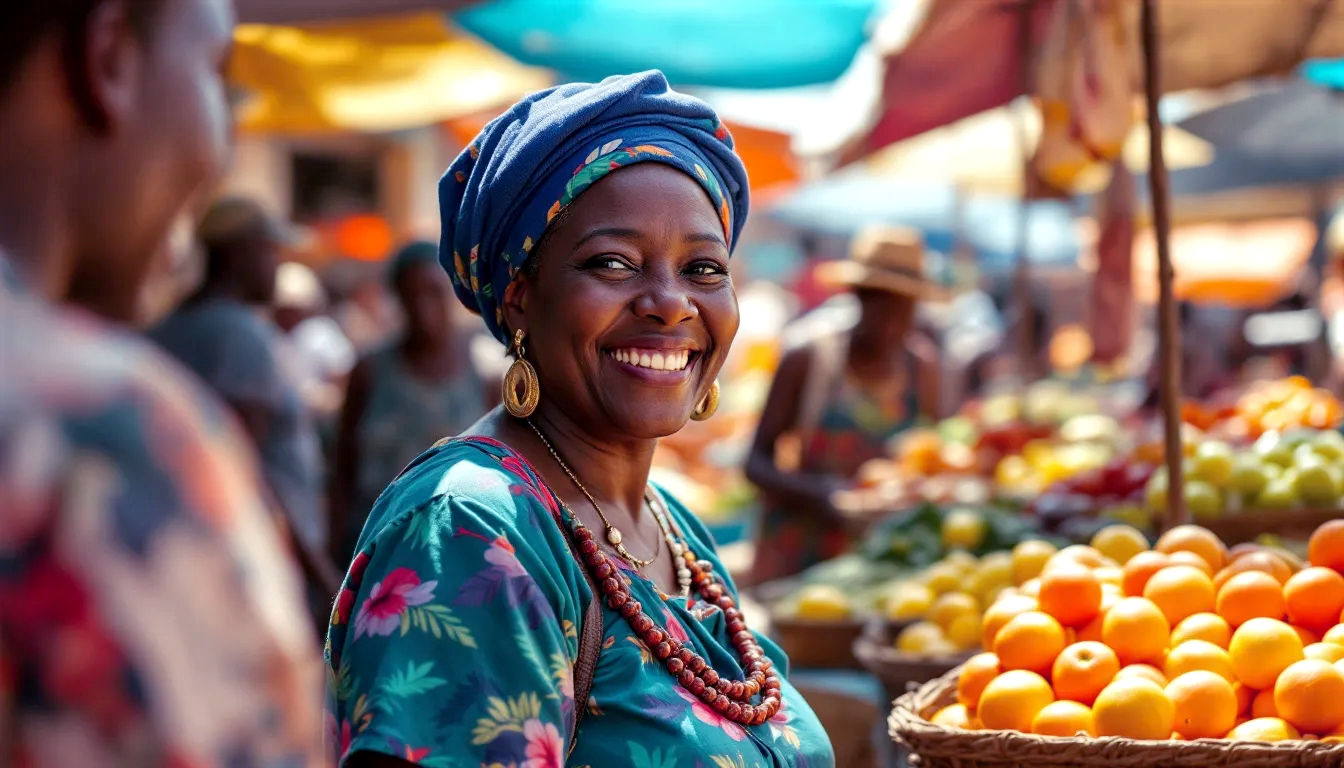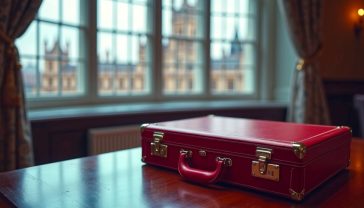Beyond English: A Deep Dive into the Languages of Zimbabwe
Discover Zimbabwe’s rich linguistic tapestry. This guide explores the history, culture, and daily use of its 16 official languages, from the widely spoken Shona and Ndebele to the colonial legacy of English.

This post may contain affiliate links. If you make a purchase through these links, we may earn a commission at no additional cost to you.
Imagine standing in the bustling Mbare Musika market in Harare. All around you, conversations buzz. You’ll hear the lyrical, flowing tones of Shona, the more guttural, clicking sounds of Ndebele, and the familiar cadence of English, often mixed together in a lively urban slang. This isn’t just noise; it’s the sound of a nation. Zimbabwe is a country with a staggering 16 official languages, a testament to its rich, complex, and sometimes turbulent history.
For many Brits, Zimbabwe might bring to mind Victoria Falls, cricket, or perhaps headlines from years gone by. But to truly understand this fascinating southern African nation, you have to listen to the way its people talk. Language here isn’t just about communication; it’s about identity, history, and culture all wrapped up in one. It tells the story of ancient kingdoms, colonial encounters, and the birth of a modern nation striving to embrace all its people.
In this guide, we’re going to journey through Zimbabwe’s linguistic landscape. We’ll explore the dominant indigenous languages, understand the enduring legacy of English, and discover some of the less-spoken tongues that add to the country’s unique character. Forget the simple idea of a single national language; Zimbabwe’s story is far more interesting than that.
The Big Two: Shona and Ndebele
While Zimbabwe officially recognises 16 languages, two indigenous languages stand out due to the sheer number of people who speak them. These are Shona and Ndebele. They represent the two largest ethnic groups in the country and their languages are central to Zimbabwean life.
ChiShona: The Language of the Majority
If you travel through Zimbabwe, you will hear Shona (or chiShona as it’s properly called, since ‘chi’ is a prefix meaning ‘language’) almost everywhere. It’s spoken by over 70% of the population, making it the most widely used language in the country. But to call it a single language is a bit like saying “British” is a single accent. Shona is actually a family of related dialects.
Think of it like the difference between Geordie, Scouse, and Cockney. A Londoner and a Liverpudlian can understand each other, but they use different slang and have distinct accents. It’s the same with Shona. The main dialects include:
- Zezuru: Spoken in the central region around the capital, Harare. This is often considered the ‘standard’ form of Shona used in media and schools.
- Karanga: Found in the southern Masvingo province. It’s believed to be one of the oldest forms of Shona and is linked to the great historical empire of Great Zimbabwe.
- Manyika: Spoken in the eastern province of Manicaland, near the border with Mozambique. It has its own unique rhythm and vocabulary.
- Korekore: Common in the northern parts of Zimbabwe.
- Ndau: Spoken in the south-east.
Despite these variations, speakers of different Shona dialects can generally understand one another.
What Does Shona Sound Like?
Shona is a tonal language. This means the pitch of your voice can change the meaning of a word. For a British ear, this can be tricky. For example, the word hama can mean either ‘relative’ or ‘termite’, depending on whether you say it with a high or low tone!
It’s also known for its beautiful, flowing proverbs and rich storytelling tradition. A common Shona proverb is “Chara chimwe hachitswanyi inda,” which means “One finger cannot crush a louse.” It’s a bit like our “Many hands make light work,” reminding people of the importance of working together.
A few handy Shona phrases:
- Mhoro: Hello
- Wakadii? How are you?
- Ndiri bho: I am fine
- Ndatenda: Thank you
Shona is a language deeply connected to the land and the history of the Zimbabwean people. Its roots stretch back over a thousand years, to the powerful kingdoms that built incredible stone structures like the ruins of Great Zimbabwe, a UNESCO World Heritage site.
IsiNdebele: The Language of the Warrior Kingdom
In the south-western part of Zimbabwe, particularly around the city of Bulawayo, the linguistic landscape changes. Here, you’ll hear the distinct, proud sounds of Ndebele (or isiNdebele). Spoken by about 20% of the population, it’s the second most common indigenous language.
Ndebele has a very different history to Shona. It’s part of the Nguni family of languages, which also includes Zulu, Xhosa, and Swati from South Africa. This is no coincidence. The Ndebele people of Zimbabwe trace their origins to a group that split from the Zulu kingdom under King Shaka in the early 19th century. Led by a charismatic general named Mzilikazi, they migrated north, eventually settling in what is now modern Zimbabwe.
Clicks and Cadence: The Sound of Ndebele
The most striking feature of Ndebele for an English speaker is its use of click consonants. These are sounds made by creating a vacuum in the mouth with the tongue and then releasing it sharply. There are three main clicks in Ndebele:
- ‘c’: A dental click, made by placing the tongue against the front teeth, like the sound we make to say “tsk tsk.”
- ‘q’: An alveolar click, made with the tip of the tongue on the roof of the mouth.
- ‘x’: A lateral click, made at the side of the mouth, a bit like the sound used to encourage a horse.
Hearing these clicks woven seamlessly into speech is fascinating. For instance, the Ndebele word for ‘no’ is cha (pronounced with a ‘c’ click).
Like Shona, Ndebele is a tonal language, but its rhythm and melody are quite different. It often sounds more forceful and guttural to an untrained ear.
A few handy Ndebele phrases:
- Salibonani: Hello
- Unjani? How are you?
- Ngiyaphila: I am fine
- Ngiyabonga: Thank you
Ndebele culture places a strong emphasis on respect and history, and this is reflected in the language. It carries the legacy of its founders, a story of migration, conflict, and the forging of a new kingdom.
The Colonial Legacy: The Role of English
You can’t talk about language in Zimbabwe without talking about English. It’s the language of government, business, and the education system. While most Zimbabweans speak an indigenous language at home, English is the primary language used in schools from a very young age. This has created a country with a remarkably high literacy rate and a population that can communicate easily on the international stage.
From Rhodesia to Zimbabwe: A Complicated History
The story of English in Zimbabwe begins with the arrival of British colonialists in the late 19th century. Cecil Rhodes’ British South Africa Company established a territory they named Rhodesia. With colonialism came the English language, which was imposed as the language of power and administration.
For decades, English was the language of opportunity. To get a good job, to attend university, or to work in government, you had to be fluent. Indigenous languages were often looked down upon and seen as ‘vernacular’, suitable for the home but not for public or professional life.
This created a deep and lasting impact. Even after Zimbabwe gained independence in 1980, English retained its official status. It was seen as a neutral language that could unite a nation of diverse ethnic groups, avoiding the politically sensitive choice of elevating either Shona or Ndebele above the other. It was also the language of global commerce and diplomacy, essential for a new nation finding its place in the world.
“Zinglish”: A Uniquely Zimbabwean English
Today, Zimbabwean English has evolved into its own distinct form. Often affectionately called “Zinglish,” it’s a vibrant and creative dialect that borrows words and grammar from Shona and Ndebele.
You might hear someone say, “I’m coming now now,” which means “I’ll be there very soon.” Or they might use the word “shame,” not to express pity, but as a term of endearment or empathy, similar to saying “ah, bless.”
This blending of languages is most obvious in the cities. Young people, in particular, often switch effortlessly between English, Shona, and/or Ndebele in a single sentence. This code-switching is a hallmark of Zimbabwean urban culture, creating a dynamic and constantly evolving slang.
A Rainbow of Languages: The Other Official Tongues
In 2013, Zimbabwe adopted a new constitution. One of its most groundbreaking features was the official recognition of 16 languages. This was a hugely important symbolic step, designed to acknowledge the nation’s true diversity and move away from the dominance of just English, Shona, and Ndebele.
These other 13 official languages are:
- Chewa: Also known as Nyanja, spoken by communities near the borders with Malawi and Mozambique.
- Chibarwe: A language spoken in the central parts of the country.
- Kalanga: Spoken in the south-west, related to Shona but distinct enough to be its own language.
- Koisan: Representing the languages of the San people, the earliest inhabitants of the region. These languages are known for their complex click sounds and are critically endangered.
- Nambya: Spoken in the north-western region, around the Hwange National Park.
- Ndau: Spoken in the east, sometimes considered a Shona dialect but given its own official status.
- Shangani: A language spoken in the far south-east of the country, near the border with South Africa.
- Sign Language: A crucial step for inclusivity, recognising the language of the deaf community as an official tongue.
- Sotho: Spoken near the border with Botswana.
- Tonga: The language of the Tonga people, who live along the Zambezi River valley, particularly around Lake Kariba. The construction of the Kariba Dam in the 1950s displaced many Tonga speakers, making the preservation of their language a key cultural issue.
- Tswana: Spoken in the extreme south-west, on the border with Botswana.
- Venda: Found in the far south, near the border with South Africa.
- Xhosa: Spoken by a small community near the southern border.
The Challenge of Recognition
Making these languages ‘official’ was one thing; making that recognition meaningful is another. For many of these smaller language communities, the challenge now is to ensure their languages survive and thrive. This means developing teaching materials, training teachers, and promoting their use in local media and government.
For languages like Tonga and Koisan, the fight is particularly urgent. Generations of being marginalised have left these languages vulnerable. The new constitution offers hope, but it requires real resources and political will to turn that hope into reality. It’s a bit like the efforts in the UK to preserve Welsh, Scottish Gaelic, or Cornish – it takes dedicated effort to protect linguistic heritage.
Language in Daily Life: Where and When They’re Spoken
So, how does this all play out in a typical day in Zimbabwe?
- At Home: For the vast majority of Zimbabweans, home life is conducted in an indigenous language. Family stories are told, meals are shared, and children are raised in Shona, Ndebele, Tonga, or one of the other languages.
- At School: The school day is a story of two languages. In the early years of primary school, children are often taught in their local mother tongue. But as they progress, the language of instruction switches almost entirely to English. Textbooks, exams, and classroom discussions are all in English.
- In the Workplace: In any professional setting, from an office in Harare to a tourist lodge in Victoria Falls, English is the default language. It’s the language of emails, reports, and meetings.
- In the Media: Radio and television reflect the country’s linguistic diversity. The Zimbabwe Broadcasting Corporation (ZBC) has channels that broadcast in multiple languages. You can tune in for the news in Shona, a drama in Ndebele, or a documentary in English. Newspapers are primarily in English, though some have sections in Shona and Ndebele.
- On the Streets: This is where language becomes a vibrant mix. In a market in Bulawayo, you’ll hear Ndebele as the main language of trade, but vendors will happily switch to English for tourists or to Shona for visitors from other parts of the country.
The Future of Language in Zimbabwe
The future of language in Zimbabwe is a story of balance. On one hand, there is English, the global language of commerce and technology, which remains essential for the country’s economic development.
On the other hand, there is a growing sense of pride and urgency around the preservation and promotion of indigenous languages. The 2013 constitution was a turning point. Activists, academics, and communities are now working to create dictionaries, literature, and educational resources in languages that were long ignored.
There’s a debate happening in Zimbabwe that mirrors conversations in many parts of the world: how do you embrace globalisation without losing your local identity? How do you ensure every citizen feels their heritage is valued?
The answer in Zimbabwe seems to be multilingualism. The ideal is not for one language to replace another, but for citizens to be fluent in their mother tongue, proficient in the national languages of Shona and Ndebele, and confident in English.
For a visitor, this linguistic tapestry is one of the most enriching parts of a trip to Zimbabwe. Don’t be afraid to learn a few basic greetings. A simple “Mhoro” in a Shona-speaking area or “Salibonani” in an Ndebele region will be met with a warm smile. It shows respect and an appreciation for a culture that is expressed through not one, but sixteen official voices. The story of Zimbabwe is written in every one of them.
Further Reading
To explore this topic in more depth, here are some highly respected resources:
- The University of Zimbabwe – Department of African Languages and Literature: A leading academic institution for research on Zimbabwean languages. https://www.uz.ac.zw/index.php/african-languages-and-literature
- The Midlands State University – Department of Languages and Literature: Another key academic centre for linguistic studies in Zimbabwe. https://ww5.msu.ac.zw/home/faculties/arts/english-and-communication/
- UNESCO Atlas of the World’s Languages in Danger: An interactive tool to explore the status of endangered languages in Zimbabwe and globally. https://www.unesco.org/languages-atlas/
- Ethnologue: Languages of Zimbabwe: A comprehensive database providing detailed statistics and information on all living languages in the country. https://www.ethnologue.com/country/ZW






